Ethiopia, a country of vast diversity and rich history, is home to a mosaic of ethnic groups. Each community brings its unique cultural and economic contributions, creating a complex tapestry of wealth distribution across the nation. Understanding which ethnic group is the wealthiest involves unraveling the interactions of history, economic activities, and modern influences.
Diving into this topic reveals the dynamic nature of Ethiopia's socioeconomic landscape. We'll examine the role historical factors play, how each ethnic group's main economic activities contribute to their prosperity, and what the future might hold for these communities in terms of wealth. This journey promises to offer insightful revelations about Ethiopia’s diverse ethnic wealth.
- Historical Context and Demographics
- Major Ethnic Groups in Ethiopia
- Economic Activities and Wealth Distribution
- Factors Influencing Wealth Among Ethnic Groups
- Future Trends and Implications
Historical Context and Demographics
To understand the wealth distribution among Ethiopia's ethnic groups, we must first delve into the country's historical context and demographics. Ethiopia is one of the oldest nations in the world, with a history that spans thousands of years. Its rich cultural heritage is rooted in ancient kingdoms and empires, such as the Aksumite Empire, which was a major trading empire in the early centuries AD. This historical depth has influenced how different ethnic groups have developed and interacted over time.
Ethiopia is home to around 80 different ethnic groups. Some of the largest include the Oromo, Amhara, Tigray, and Somali. The Oromos are the largest ethnic group, representing about 34.5% of the population, followed by the Amharas at around 27%. The Tigrayans make up about 6.1%, and the Somali people account for roughly 6%. This diverse tapestry of peoples has influenced various aspects of Ethiopian society, from language and traditions to economic activities.
The dynamics of power and wealth among these groups have shifted significantly throughout history. For instance, during the reign of Emperor Menelik II in the late 19th and early 20th centuries, the Amharic speaking elite held significant power, which led to the dominance of Amharic culture and language. This period also saw the incorporation of numerous regions and ethnic groups into what became modern Ethiopia, altering the socio-economic landscape dramatically. This history has had lasting effects on the distribution of wealth in the country.
Post-World War II Ethiopia, under Emperor Haile Selassie, embarked on a series of modernization efforts which aimed to centralize power and spur economic development. However, these efforts were often unevenly distributed, benefiting some ethnic groups more than others. For example, the establishment of Addis Ababa as the capital meant that significant investments in infrastructure and education were concentrated in the city, which largely benefited the Amhara population who were the predominant residents.
During the Derg regime (1974-1991), the socialist government attempted to redistribute land and wealth through collectivization. However, the execution of these policies often exacerbated ethnic tensions and did not necessarily lead to a fair distribution of resources. The Tigrayan People's Liberation Front (TPLF) eventually led a coalition that overthrew the Derg, and the subsequent Ethiopian People's Revolutionary Democratic Front (EPRDF) government, dominated by the TPLF, resulted in significant developments in the Tigray region, influencing the economic landscape for the Tigrayan ethnic group.
The introduction of ethnic federalism in the 1990s aimed to empower various ethnic groups by giving extensive autonomy to regional states. This system created opportunities for different regions to focus on their economic development, leading to varied levels of wealth among ethnic groups. For instance, the Oromia region, which is rich in natural resources such as coffee, has seen significant economic growth, benefiting the Oromo people. In contrast, other regions may not have experienced the same level of development due to various factors including geographical and resource-based limitations.
These historical contexts are essential for understanding the current demographics and wealth distribution in Ethiopia. Over the centuries, the interaction between different ethnic groups, the shifting of political power, and the impact of government policies have all played a role in shaping the socio-economic fabric of the country. It’s also important to recognize how historical grievances and policies have left long-lasting effects on certain communities, influencing their economic status today.
The future of wealth distribution in Ethiopia will likely continue to evolve with the country's political and economic changes. While some ethnic groups may continue to experience significant economic growth, others may need targeted policies and development programs to ensure a more equitable distribution of wealth. Understanding this intricate history is crucial for creating a path towards a more inclusive and prosperous Ethiopia.
Major Ethnic Groups in Ethiopia
Ethiopia is a fascinating country with a rich cultural mosaic. Major ethnic groups include the Oromo, Amhara, Tigray, and Somali, among others. Each of these groups has its own unique culture, language, and history that significantly shape the nation's identity. Among them, the Oromo and Amhara are the largest ethnic groups, comprising over 60% of the population. Historically, the Tigray people have played a prominent role in politics and military conflicts.
The Oromo people, who primarily inhabit the central and southern parts of Ethiopia, are known for their agricultural expertise. They cultivate coffee, teff, and other crops, which are not just staples but also essential for the country’s economy. The Amhara, residing mainly in the northern and central highlands, have a long history intertwined with the Ethiopian Orthodox Church. Their economic activities are largely based on farming and government employment. Due to their historical influence, they have deep-rooted systems of administration and governance.
The Tigray ethnic group has a reputation for their entrepreneurial spirit and ingenuity. Their region is known for its strategic location, which has helped them develop trade networks over centuries. Construction, trade, and service industries are some of the primary economic activities in the Tigray region. Intriguingly, the Somali ethnic group, predominantly in the eastern part of Ethiopia, are traditionally pastoralists. Livestock trading has always been crucial for their economy, and recent years have seen them diversify into various forms of trade and commerce. A well-known saying emphasizes their resilience and resourcefulness:
“In the arid lands, the Somali people have learned to turn adversity into opportunity.”
It is interesting to note how communal systems and traditional practices influence each group's economy. For example, the Gadaa system of the Oromo plays a critical role in their social and economic organization. This ancient system of governance categorizes members into groups based on their age. The Amhara, on the other hand, are known for their intricate family ties and social structures, which further reflect in their communal economic practices. Understanding these unique frameworks allows for a richer perspective on how wealth is distributed among these groups.
In all, Ethiopia's ethnic groups demonstrate diverse economic activities and cultural practices that define their wealth. As Ethiopia continues to modernize and develop, the dynamic between these groups offers a continuously changing landscape. Observing these shifts provides crucial insights into the broader socioeconomic fabric of this remarkable country.

Economic Activities and Wealth Distribution
Understanding the distribution of wealth among Ethiopia's ethnic groups requires diving into their economic activities. Ethiopia is primarily an agrarian nation, yet each ethnic group has unique economic practices that influence their relative wealth. The Oromos, for instance, are known for their extensive farming activities. As the largest ethnic group, they dominate many agricultural zones, growing coffee, Ethiopia’s most significant export crop. This agrarian strength leads to considerable wealth accumulation, especially in regions like Oromia.
The Amharas, another major ethnic group, are noted for their mixed economic activities, blending traditional farming with small-scale businesses in urban areas. Their historical influence in Ethiopia has also allowed them access to various opportunities in trade and government positions. This combination of agriculture and commerce plays a pivotal role in their economic standing.
On the other hand, the Tigrayans have focused on sectors like trade, government, and education. Historically, they have held significant governmental power, especially during the Ethiopian People's Revolutionary Democratic Front (EPRDF) era. This political influence has facilitated access to resources and economic opportunities, which has helped them amass wealth.
The historian Bahru Zewde once noted, “Ethiopia’s ethnic groups have diverse economic landscapes, each contributing uniquely to the country’s wealth.”
The Southern Nations, Nationalities, and Peoples' Region (SNNPR) represents a melting pot of various smaller ethnic groups, each with its agricultural specialties. For instance, the Sidama people are renowned for coffee cultivation, which significantly boosts their economic status. Each group's economic success varies, but the shared focus on agriculture remains a common thread. Additionally, Ethiopia’s rapid urbanization has allowed some ethnic groups to transition from rural farming to urban industries, opening new avenues for wealth.
In urban centers, ethnic groups like the Gurage have carved out niches for themselves in commerce and entrepreneurship. The Gurage are famous for their diligence and business acumen, which has led them to become successful traders and industrialists. Their presence in major cities such as Addis Ababa showcases their economic versatility and ability to thrive in changing economic landscapes.
Economic Disparities and Challenges
Despite these economic activities, significant disparities exist among ethnic groups. Access to education, infrastructure, and capital significantly influences economic success. While some groups thrive due to historical advantages or resource-rich areas, others struggle due to marginalization and lack of access to opportunities. Government policies and regional stability also play crucial roles in shaping the economic landscape. For example, political instability in certain regions can disrupt economic activities and hinder wealth accumulation.
Addressing these disparities requires comprehensive policies that promote inclusive economic growth, equitable resource distribution, and cross-ethnic collaborations. Encouraging diverse economic activities beyond agriculture—such as technology, manufacturing, and tourism—can open new avenues for wealth. Providing education and training aimed at skill development can also empower various ethnic groups to participate more fully in modern economic systems.
Factors Influencing Wealth Among Ethnic Groups
When examining the distribution of wealth among Ethiopia's various ethnic groups, several key factors stand out. These elements shape the economic status of communities, creating disparities or advantages that can persist over generations. One significant factor is geographic location: ethnic groups that reside in fertile and resource-rich areas tend to have greater opportunities for economic activities like agriculture and trade. The highlands and river valleys, areas home to groups such as the Amhara and the Oromo, are notable for their productivity and access to water resources, facilitating prosperous agricultural practices.
Another critical factor is historical context. Ethnic groups that were historically integrated into trade routes or had early exposure to formal education often gained a head start in accumulating wealth. The Tigrayan community, for instance, has a rich history that includes periods of significant political power and influence, which translated into better economic conditions. Historical access to education and political power has allowed such groups to dominate key sectors of the economy over time.
Political influence also plays a substantial role. Ethnic groups with greater representation in governmental structures often secure more development projects and resources for their regions. Political stability within an ethnic region can lead to consistent growth and economic development. The rise of the Oromos in contemporary Ethiopian politics has seen increased investments in the Oromia region, spurring economic activities and wealth within this community.
Education remains a cornerstone for economic advancement across all ethnic groups. Communities placing a high value on education, such as the Amhara, have produced a workforce capable of taking on varied and profitable occupations. With access to universities and vocational training, these groups can pivot to high-earning sectors like technology, healthcare, and engineering. Education not only offers direct economic benefits but also fosters innovations that can uplift entire communities.
Moreover, diaspora connections significantly influence wealth distribution. Ethnic groups with substantial expatriate communities often receive financial remittances, which can be invested in local businesses and infrastructure. For instance, the Gurage community has a notable diaspora presence in various countries, channeling remittances back to Ethiopia to fund entrepreneurial ventures and community projects.
"Diaspora remittances are not just about money; they are about transformative investments," says Professor Alula Abate, an economist at Addis Ababa University.
Investment in local businesses spurs growth and development within these ethnic communities. Diversification into various economic sectors ensures resilience and sustainability, preventing over-reliance on a single industry. Ethnic groups that excel in entrepreneurship often create a ripple effect of job creation and economic stimulation within their regions.
Finally, access to natural resources cannot be overlooked. Regions endowed with resources like minerals, oil, and fertile soil provide their residents with unique economic advantages. Ethnic groups inhabiting these areas can leverage such resources to boost their economic standing. Effective management and equitable sharing of these resources are crucial in maintaining and enhancing wealth distribution.
These factors collectively paint a vivid picture of how wealth among Ethiopia's ethnic groups is influenced and sustained. While disparities exist, understanding these elements provides a foundation for addressing them and fostering equitable growth across all communities.

Future Trends and Implications
As Ethiopia navigates the 21st century, the economic landscapes of its ethnic groups are set to undergo significant transformations. The country's ongoing industrialization and development initiatives spearheaded by the government play a pivotal role in influencing these future trends. Focusing on the broader impact, Ethiopia's move toward modernization is bound to bring about shifts in wealth distribution among its diverse ethnic groups.
One notable trend is the increasing role of technology and innovation in the country's economy. Ethnic groups traditionally involved in agriculture might find themselves needing to adapt to new ways of doing business. Urbanization trends, especially in cities like Addis Ababa, are creating new economic opportunities while potentially leading to the decline of traditional economic activities in rural areas. This shift creates a need for a balance between preserving the cultural heritage of these groups and embracing technological advancements.
Investment in education and entrepreneurial skills is expected to play a critical role in shaping future wealth distribution. As more members of various ethnic communities gain access to higher education and training, they are likely to leverage these opportunities to drive economic growth within their communities. The emergence of a young, educated workforce can significantly alter the economic dynamics, promoting diversification beyond traditional sectors.
Political stability and good governance will also have a profound impact on future trends. Fair policies that promote inclusive economic growth can help bridge the wealth gap among ethnic groups. For instance, equitable distribution of resources and opportunities in healthcare, education, and infrastructure development can empower communities to uplift their economic status.
International partnerships and foreign investments are another aspect driving future trends. Ethiopia's strategic partnerships with countries like China, the United States, and members of the European Union bring in crucial investments and technical know-how. These collaborations are likely to benefit various ethnic groups by creating jobs, enhancing infrastructure, and providing access to global markets.
"Ethiopia's Vision 2025 aims for the country to achieve lower-middle-income status by 2025. This ambitious vision will require harnessing the potential of all its ethnic groups, ensuring that no community is left behind in the march towards prosperity," says Prime Minister Abiy Ahmed.
Environmental sustainability is becoming increasingly important in shaping economic activities. Ethnic groups whose livelihoods depend on agriculture might face challenges due to climate change. There is a growing emphasis on sustainable practices and renewable energy sources to mitigate these impacts and foster long-term economic resilience.
Analyzing these future trends and implications offers a glimpse into how Ethiopia's ethnic groups might redefine their economic identities. While challenges exist, the potential for growth and prosperity is vast, contingent on strategic planning and inclusive policies. The harmonious growth of all ethnic communities is not only crucial for social cohesion but also for ensuring that Ethiopia's journey to economic stability is inclusive and sustainable.
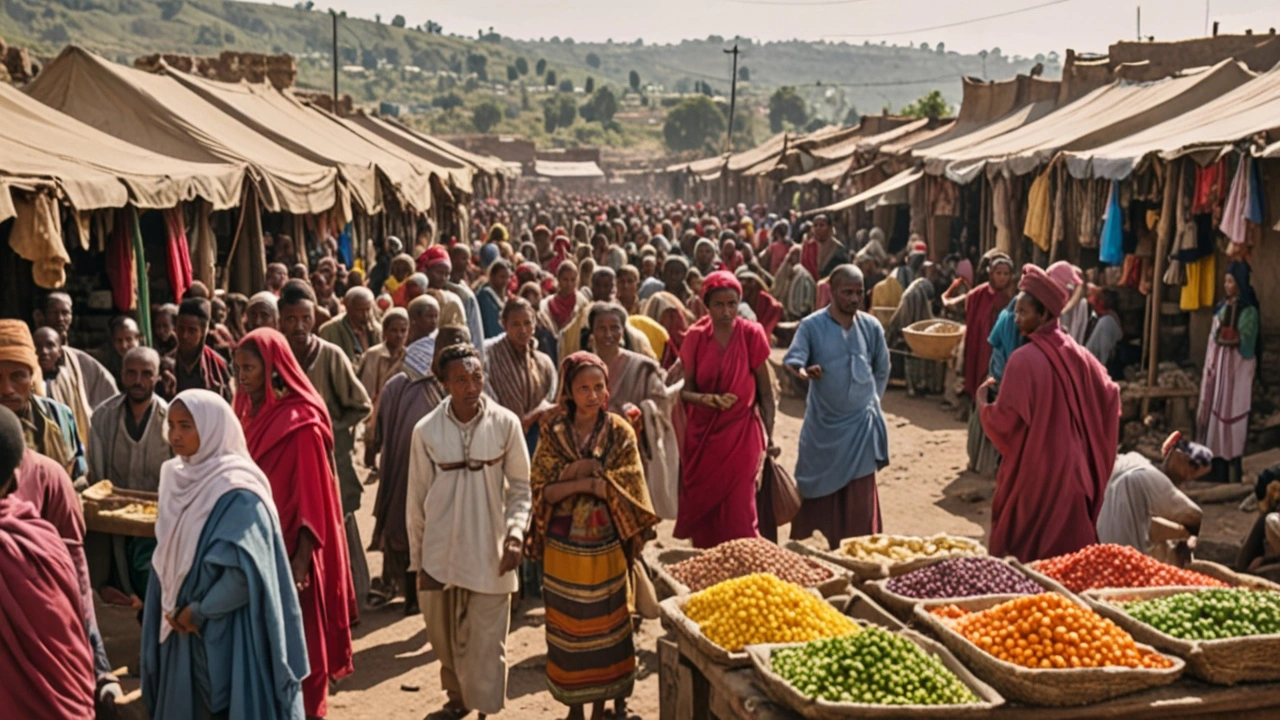
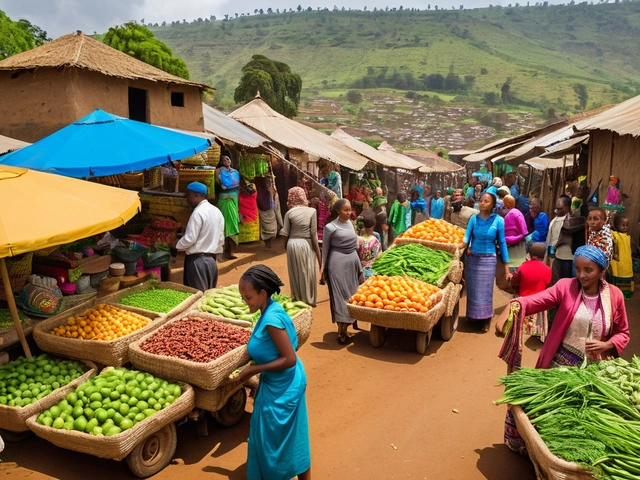 Ways People Earn a Living in Ethiopia: Unique Opportunities and Challenges
Ways People Earn a Living in Ethiopia: Unique Opportunities and Challenges
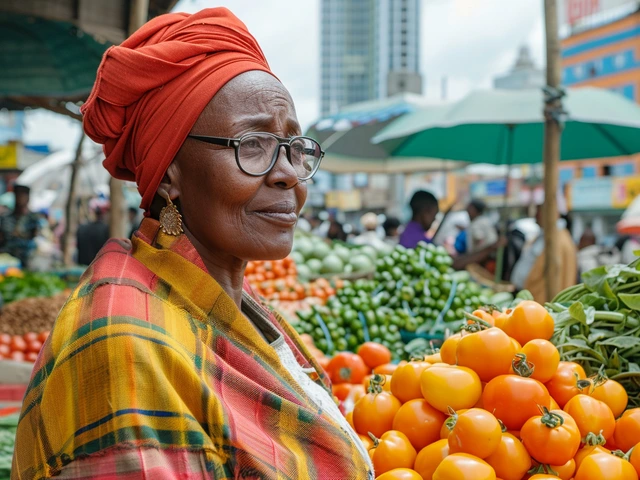 Navigating Business Risks in Ethiopia: Opportunities and Challenges
Navigating Business Risks in Ethiopia: Opportunities and Challenges
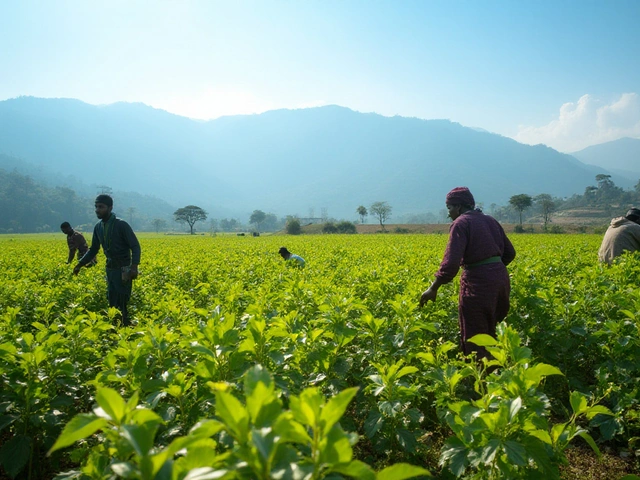 Most Common Jobs in Ethiopia Revealed
Most Common Jobs in Ethiopia Revealed
 Understanding Middle Class Income in Ethiopia Today
Understanding Middle Class Income in Ethiopia Today
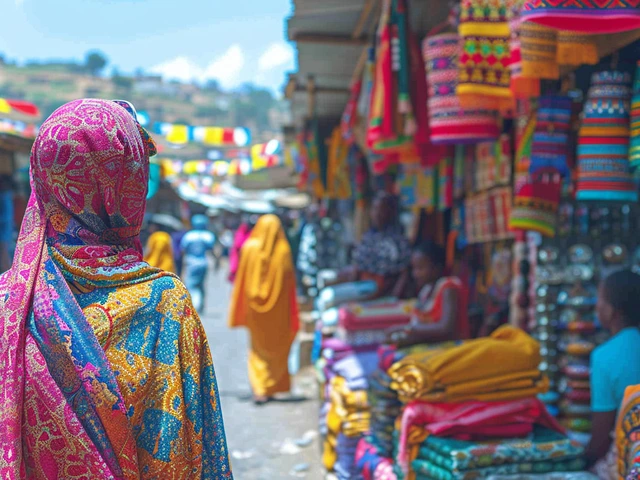 Starting a Business in Ethiopia: Opportunities, Challenges, and Tips for Entrepreneurs
Starting a Business in Ethiopia: Opportunities, Challenges, and Tips for Entrepreneurs
Abhijit Pimpale
July 14, 2024 AT 17:42The Oromo's dominance in coffee production is a key driver of their regional wealth, not merely their population size.
Eric DE FONDAUMIERE
July 14, 2024 AT 19:22Wow! Thiss post gives a big picture of Ethiopia’s ethnic economies – super helpful!
Pauline Herrin
July 14, 2024 AT 21:02The analysis provides a thorough historical framework, yet it appears to underweight the socioeconomic nuances of the smaller ethnic groups, resulting in a somewhat skewed portrait of wealth distribution.
pradeep kumar
July 14, 2024 AT 22:42While the analysis mentions the Tigrayan trade networks, it overlooks the recent infrastructural setbacks caused by conflict.
love monster
July 15, 2024 AT 00:22Great job establishing the structural comparative advantage of each region; understanding those economic underpinnings helps us predict where new investment pipelines might emerge.
Christian Barthelt
July 15, 2024 AT 02:02Conversely, the Somali diaspora’s remittance flow is arguably more significant than the article suggests, especially given its multiplier effect on local entrepreneurship.
Ify Okocha
July 15, 2024 AT 03:42The author’s portrayal of the Amhara as merely bureaucratic is a lazy simplification that ignores their vibrant entrepreneurial sectors.
William Anderson
July 15, 2024 AT 05:22It is commendable that the piece attempts a comprehensive sweep across Ethiopia’s mosaic of peoples, yet the narrative flirts with superficiality at crucial junctures. The emphasis on historical anecdotes, while enriching, often eclipses hard data that could substantiate claims of wealth concentration. Moreover, the treatment of regional natural resources tends to gloss over the uneven policy implementation that fuels disparity. The analysis alludes to the Oromo’s coffee dominance but fails to quantify its contribution relative to national export revenues. Similarly, the mention of Gurage commercial acumen lacks any discussion of the diaspora’s role in capital accumulation. A more rigorous approach would juxtapose GDP per capita figures with ethnic population percentages, highlighting where growth outpaces or lags behind expectations. The section on political influence reads as a recitation of power shifts without exploring how patronage networks translate into fiscal benefits. In the same vein, the discussion of education privileges does not reference enrollment statistics that could illuminate access gaps. While the article notes climate change as a future concern, it omits the ongoing agricultural droughts already reshaping livelihoods in the lowlands. The brief nod to technology adoption is optimistic yet unrealistically short‑sighted, disregarding the digital divide that persists across rural districts. Furthermore, the author’s optimistic tone about inclusive policies overlooks documented instances of marginalization that persist within certain federal states. The conclusion, though hopeful, would be stronger with concrete policy recommendations backed by comparative case studies from other multi‑ethnic nations. Overall, the piece provides a valuable primer but falls short of delivering the analytical depth required for policy‑makers and scholars alike.
Sherri Gassaway
July 15, 2024 AT 07:02In the grand tapestry of nations, wealth is but a shadow of cultural capital.
Milo Cado
July 15, 2024 AT 08:42Great overview! 🌟 This kind of data can spark collaborative development across all groups. 😊 By highlighting both historic strengths and future challenges, we can inspire targeted investments that benefit every community.
MONA RAMIDI
July 15, 2024 AT 10:22Honestly, this piece glosses over the systemic neglect faced by the Sidama, and that needs to be front‑and‑center.
grace riehman
July 15, 2024 AT 12:02I think the article does a good job of bringing out the cultural richness, but it could definately benefit from a few more real‑world examples.
Vinay Upadhyay
July 15, 2024 AT 13:42Oh sure, because resource allocation has never been politicized in Ethiopia, right?
Eve Alice Malik
July 15, 2024 AT 15:22I'm curious how the rise of fintech platforms will reshape wealth prospects for the pastoralist communities in the coming decade.
Debbie Billingsley
July 15, 2024 AT 17:02Any discussion of Ethiopian wealth that downplays the historic contributions of the Amhara is an affront to our national heritage.
Patrick Van den Berghe
July 15, 2024 AT 18:42The data lacks depth.
Josephine Gardiner
July 15, 2024 AT 20:22While brevity can aid readability, the omission of quantitative metrics limits the analytical rigor of the article.
Jordan Fields
July 15, 2024 AT 22:02The article should use “ethnic groups” instead of “ethinc groups”.